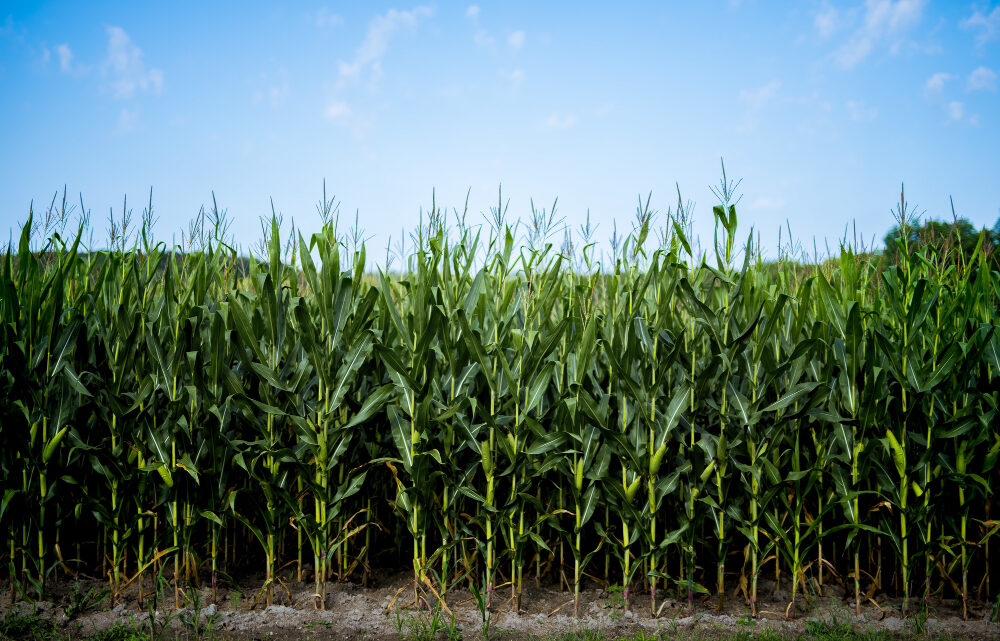The influence of geography on the taste of different rums

Rum, a drink that has traversed seas and continents, bearing witness to revolutions and celebrations, carries within it more than tales of pirates and colonial eras. Each drop comprises a mosaic of elements that shape its flavor, aroma, and character. One of the most influential protagonists is geography, which not only sculpts the landscapes but also the very essence of this iconic libation.
What makes Jamaican rum distinct from Puerto Rican or Guyanese rum? How does rum distilled in the lofty Guatemalan mountains differ from that produced on the sultry Caribbean coasts? The answer, in large part, lies at the intersection of rum distillation and the geographical terrain in which it is crafted.
Essential Geographical Factors
Geography, the discipline that studies the Earth’s surface and its inhabitants, profoundly influences most of the products we consume. In the case of spirits like rum, the impact of geography is particularly discernible. Let’s delve into how specific geographical factors can directly shape the characteristics and flavor of this prized elixir.
Soil Type and Terroir
You may have encountered the term “terroir” in discussions about wines, but did you know that this concept extends to rum as well? Terroir encompasses the set of geographical and climatic attributes of a particular region that affect the cultivation of a product. In the context of sugarcane, the primary ingredient in rum, the type of soil in which it grows can determine the quality and flavor of the extracted juice. Mineral-rich soils, for example, can imbue rum with earthy, profound notes, while sandy soils may yield a lighter profile.
Climate and Seasonal Variations
Climate, with its capricious seasonal fluctuations, is another pivotal geographical factor in rum production. Consider this: in regions characterized by hot and humid climates, the fermentation of sugarcane juice can accelerate, resulting in rums with more intense flavors. Conversely, in areas with cooler temperatures, the process may proceed more slowly, influencing flavor concentration. Moreover, the climate can significantly impact the harvest; a season of heavy rains could affect both the quantity and quality of the sugarcane juice obtained.
Altitude and Its Effect on Distillation
When contemplating rum production, altitude may not immediately spring to mind. However, elevation, which refers to the height above sea level, exerts a substantial influence on the distillation process and, consequently, on the characteristics of the rum. Let’s delve into the relationship between altitude and distillation to uncover how this crucial geographical factor affects your favorite spirit.
Altitude primarily alters the boiling point of liquids. At higher altitudes, atmospheric pressure decreases, causing liquids, including sugarcane fermentation broth, to boil at lower temperatures compared to sea level. This phenomenon holds critical implications for distillation. By boiling at reduced temperatures, the constituents of the broth undergo different separations, resulting in a distinctive aromatic and flavor profile. In essence, a rum distilled in the mountains may exhibit different characteristics than one distilled on the coast, even when using the same ingredients and methods.
Additionally, altitude can influence rum maturation. At higher elevations, the temperature fluctuation between day and night may be more pronounced. This leads to more dynamic interactions between the rum in the barrels and the wood, acquiring certain aromatic and flavor characteristics more rapidly. It’s worth noting that the higher the temperature, the greater the volume lost to evaporation, and elevated humidity can intensify alcohol losses during maturation, enhancing esterification.
Regional Differences in Rum Production
Rum is a universal libation, but not all rums are created equal. While all derive from sugarcane, the subtleties in their flavor and aroma largely stem from regional distinctions in their production methods and the specific characteristics of the sugarcane used.
Caribbean Rum: Island Diversity and Flavors
The Caribbean, for many, serves as the cradle of rum. Each island, from Jamaica to Martinique, boasts its own traditions and production techniques, often governed by specific regulations. Some Caribbean rums are renowned for their rich and robust taste, while others stand out for a drier and spicier profile. These differences can be attributed to factors such as the type of sugarcane used (whether juice or molasses), yeast strains, fermentation methods, distillation processes, and the influence of colonial-era practices. For instance, Martinique’s agricultural rums, crafted from fresh cane juice rather than molasses, exhibit a distinctively herbaceous and earthy flavor profile, along with floral and grassy notes.
Central/South America
Beyond the Caribbean, Central and South America have nurtured their traditions in rum production. Nations like Guatemala, Nicaragua, and Guyana have gained recognition for their aged and full-bodied rums. The geographical diversity, from lofty mountains to expansive plains, significantly influences sugarcane cultivation and the production process. As a result, a rum from the Guatemalan highlands may possess distinct characteristics compared to one produced along the coast of Guyana, reflecting the unique environmental and practical conditions of each region.
Differences Between Jamaican and Puerto Rican Rum
Jamaica and Puerto Rico, two Caribbean gems that share crystal-clear waters and golden beaches, offer rums with remarkably different characteristics. Colonial history, geography, local traditions, and production methods have collectively shaped the taste and aroma of these two islands’ rums. By exploring the distinctions between Jamaican and Puerto Rican rum, you embark on a journey through centuries of history and tradition.
Jamaican Rum Jamaica is renowned for its potent and characterful rums. A distinguishing feature of Jamaican rum is its high ester content, compounds responsible for its fruity flavors and often described as “funky.” This profile is achieved through prolonged fermentation and the use of wild yeasts, along with the inclusion of dunder, muck, and cane vinegar. Pot stills, commonly employed in Jamaica, retain more flavors and produce a robust distillate. This distillation method, combined with the tradition of aging rum in oak barrels, results in full-bodied rums characterized by notes of banana, tropical fruits, spices, and occasionally a touch of smoke.
Puerto Rican Rum In contrast to Jamaican rum, Puerto Rican rum is renowned for its smoothness and clean profile. Puerto Rico predominantly employs columnar distillation, yielding a lighter and more refined rum. Local regulations mandate aging Puerto Rican rum for at least a year, though many producers opt for longer maturation periods. Consequently, Puerto Rican rum boasts subtle notes of vanilla, caramel, and wood. The tropical climate of Puerto Rico accelerates the aging process, imbuing the rum with flavors and aromas in a shorter timeframe.
Guatemalan rum versus Guyanese rum
When discussing rum, the discussion can expand beyond the Caribbean and address the rich tradition and heritage of the Central and South American regions. Two countries that stand out in the production of high quality rums are Guatemala and Guyana. Although both are renowned producers, their rums have notable differences in flavor, aroma, and production techniques. Discover with us the contrast between these two spirits and the history that makes them so unique.
Rum from Guatemala: Guatemala is widely recognized for its tradition in the production of aged and complex rums. Zacapa, one of the most famous brands in the country, stands out for its ageing process in the highlands, where the variation between day and night temperatures contributes to the enrichment of the rum’s flavor. This process, known as the “Solera System”, consists of aging rum in a series of barrels that previously contained different wines and spirits, providing a rich range of flavors and aromas, from sweet notes of caramel and chocolate, to fruit and spice nuances.
Guyanese Rum: Guyana, located on the northeastern coast of South America, has a long tradition in rum production, influenced by its British colonial history. One of its distinctive features is the use of wooden stills, in particular, the Demerara Wooden Pot Still, a relic dating back to the 18th century. Guyanese rums are characterized by a robust flavor, rich in earthy, dark fruit notes and often with a smoky touch. Additionally, Guyana’s warm and humid climate favors an accelerated aging process, resulting in intensely tasty rums in a relatively short period.
Asian rum: a new player in the market
While regions such as the Caribbean, Central and South America have historically dominated the rum scene, Asia has emerged in recent decades as an exciting new player in the rum market. Leveraging tropical climates, rich agricultural traditions, and an openness to innovation, several Asian countries are producing rums that capture the attention and palate of enthusiasts and experts alike. Explore with us this fascinating world of Asian rum and discover how it has managed to gain a foothold in such a competitive market.
The Southeast Asian region, with its warm and humid climate, is conducive to the cultivation of sugarcane. Countries such as the Philippines, Thailand, and Indonesia have long taken advantage of these conditions to produce rum, although in many cases, their production has remained local. However, in recent years, brands have emerged that seek to project themselves internationally, standing out not only for the quality of their rum, but also for incorporating traditional techniques and flavors from their regions.
The Philippines, for example, has achieved international recognition with brands such as Don Papa, which offer soft rums with notes of tropical fruits and vanilla. This quality is due in part to the islands’ unique microclimate, but also to the ability of Filipino distillers to combine traditional methods with modern techniques.
Thailand, on the other hand, has surprised many with rums that display intriguing complexity, with hints of herbs and spices that reflect the country’s rich cuisine. The use of local ingredients in the aging process, such as barrels made from Thai woods, brings unique characteristics that distinguish Thai rum in the global market.
Finally, countries such as India and Japan, although not in Southeast Asia, have also entered the world of rum with interesting proposals. India, with its long tradition of producing spirits such as arrack, has begun experimenting with premium rums, while Japan, known for its whiskies, has transferred its meticulousness and attention to detail to the art of rum distillation.
The raw material: sugarcane and its connection to geography
Sugar cane is the essence of rum. Without this tropical plant, there would be no such thing as this drink, which is so appreciated all over the world. But what makes sugarcane so special? And how does geography influence the quality and characteristics of this raw material? Immerse yourself in the intrinsic relationship between sugarcane, terroir and the final quality of rum.
Sugarcane is a plant that prefers tropical and subtropical climates. It needs sun, fertile soil, and good drainage to thrive. It is no coincidence that the regions most renowned for their rum production, such as the Caribbean, Central America and parts of Asia, have these ideal conditions. However, not all reeds are the same. As with grapes in winemaking, the variety of sugar cane, the soil where it grows and the weather conditions of the year influence the taste and aroma of rum.
This is called terroir, a French term that refers to the unique combination of geographical, geological, and climatic factors of a particular region. In the context of rum, terroir refers to how the land characteristics and climate of a specific region affect the quality of sugar cane and thus the profile of rum. For example, a sugarcane grown in the volcanic lands of Martinique may have more mineral notes compared to one grown in the sandy soils of Barbados.
Beyond the terroir, agricultural practices also play an essential role. The age of the cane at harvest, growing methods, and cutting practices can influence the concentration of sugars and other compounds in the cane juice. In some regions, such as agricultural rums in the French Caribbean, fresh cane juice is used for distillation, resulting in a rum with a more herbaceous and earthy profile.
Cane varieties and their geographical distribution
Sugarcane, whose scientific name is *Saccharum officinarum*, is a plant that has been cultivated and selected for thousands of years, giving rise to several varieties. As with other crops, different types of cane have been developed or selected to adapt to specific climatic conditions, resist pests or diseases, and offer particular flavor profiles. By exploring these varieties, you can appreciate how geography has influenced the distribution and characteristics of sugarcane in different regions of the world.
Sugar cane originated in Southeast Asia, where the oldest and most primitive varieties are found. From there, the plant spread to India and China and was subsequently taken to the Mediterranean regions by Arab traders. It was not until the voyages of Christopher Columbus that sugar cane reached the New World, in particular the Caribbean, where it found ideal conditions for cultivation. The demand for sugar in Europe led to an intense selection and improvement of varieties in these regions.
Criollo varieties:
In Latin America and the Caribbean, the arrival of cane led to the development of criollo varieties. These varieties were adapted to local conditions and often feature robust characteristics and distinctive flavors that are reflected in the rums produced in these areas. Some, such as Cuba’s ‘Caña Cristal’, are known for their clear and tasty juice.
High Production Varieties:
With the rise of the sugar industry, varieties were sought that would maximize sugar production. These varieties, often scientifically developed hybrids, are found in large areas of cultivation from Brazil to India. They are designed to resist diseases, have high yields and facilitate mechanization.
Heritage Varieties:
In certain regions, an effort has been made to preserve and cultivate ancient or heritage varieties. These reeds often offer unique flavor profiles, highly prized in artisanal or premium rums. For example, in Martinique, the cultivation of historic varieties is an essential part of the production of its prestigious’ Rhum Agricole ‘.
Cultivation practices and their influence on taste
Rum, beyond being the result of a fermentation and distillation process, is also the end product of a chain that begins with sugar cane. This plant, while resilient, requires specific care and attention to thrive and deliver quality juice. The decisions made during its cultivation can, and indeed do, significantly influence the taste profile of rum. But what cultivation practices are those and how do they affect flavor?
Irrigation and nutrition:
The amount of water and nutrients that sugarcane receives is essential to determine the concentration and quality of the sugars in its juice. Excessive watering can dilute the juice and reduce its sugar concentration, while inadequate nutrition can result in weak and less productive canes. Some distilleries, particularly those looking for rums with specific flavor profiles, rigorously control irrigation and nutrition, sometimes using precision farming techniques.
Pest and Disease Control:
The use (or non-use) of pesticides and herbicides can influence the taste profile of rum. Some distilleries opt for organic farming practices, avoiding chemicals and opting for biological controls to manage pests. Not only is this approach more environmentally friendly, but it can also result in a rum with a cleaner, more natural flavor profile.
Harvest Time:
Deciding when to harvest sugarcane is a crucial choice. The ripeness of the cane will influence its sugar content and other compounds. A cane that is harvested too early or too late may not offer the desired flavor profile. Some distilleries even choose to harvest by hand to select only the reeds that are at the optimum point of maturity.
Post-Harvest Management:
Once harvested, the cane must be processed quickly to avoid loss of sugars and unwanted fermentation. The way the cane is transported, stored and handled can have a direct impact on the quality of the extracted juice and, therefore, on the taste of the rum.
Distillation and Maturation Methods: The Influence of the Environment
Once the sugarcane juice has undergone fermentation to become must, the distillation process becomes the next pivotal step in crafting rum. However, even after distillation, the environment continues to exert a profound influence on the character and flavor of rum during its maturation. Let’s explore how distillation methods and environmental conditions during maturation shape the profile of this coveted beverage.
Distillation
Distinct methods and equipment are employed for distilling rum, each imparting its unique characteristics. For instance, copper stills, traditionally utilized in places like Jamaica and Guyana, bestow rum with a robust and full-bodied character. In contrast, distillation columns, favored in modern distilleries and locales like Puerto Rico, produce lighter and cleaner rum. Nevertheless, geography remains a significant factor here, as altitude can affect the boiling point of liquids, consequently influencing the profile of distilled rum (in certain cases).
Maturation
Following distillation, many rums undergo an aging process within wooden barrels. This is where the geographical environment once again takes center stage. Factors such as humidity, temperature, and altitude can significantly impact the rate of evaporation of rum and its interaction with the wood in the barrel.
Tropical vs. Temperate Climates
In tropical climates characterized by high temperatures and humidity, rum matures more rapidly due to swift evaporation and oxidation. This phenomenon explains why a 5-year-old rum aged in the Caribbean can exhibit a flavor profile as intricate as that of a 12-year-old Scotch whisky matured in Scotland (or even akin to a 15-year-old whisky).
Altitude (Elevation)
Barrels stored at higher altitudes experience fewer temperature fluctuations and a distinct evaporation rate, leading to rums with distinctive characteristics.
Barrel Materials
The type of wood employed for barrels and their prior usage (whether they previously held bourbon, sherry, or wine) can introduce additional layers of flavor to the rum. However, the environment also exerts its influence in this context. In wetter regions, rum can extract more soluble compounds from the wood, while in drier areas, water evaporation can concentrate the flavors of the rum.
Barrels and Their Interaction with the Local Climate:
Wooden barrels have been utilized for centuries in the maturation and storage of alcoholic beverages, a tradition that persists in rum production. While the barrel wood imparts distinct flavors and aromas to the rum, the local climate in which these barrels are stored plays a critical role in shaping this process. The interplay between the rum, the barrel, and the surroundings constitutes a delicate dance that defines the character of each bottle.
The Breath of Wood:
Wooden barrels are porous, allowing air to enter and exit. This “breathing” is integral to the maturation process. In hot, humid climates like those found in the Caribbean, the evaporation of water from the rum occurs more rapidly than the evaporation of alcohol, resulting in an increase in the alcohol content of the remaining liquid. Conversely, in cooler, drier climates, alcohol tends to evaporate more quickly, yielding a milder rum with lower alcohol content.
Expansion and Contraction:
With daily temperature fluctuations, the rum inside the barrel expands and contracts. This cyclic action forces the rum in and out of the wood’s pores, facilitating the extraction of compounds such as tannins, lignins, and other elements that contribute to flavor and color. In regions where temperature swings are more pronounced, this effect intensifies, accelerating the aging process and producing rums with richer and more complex flavor profiles. (It’s important to note that esterification continues to occur in oak during this process.)
Interaction with the Environment
The location of the cellars where barrels are stored can also influence the flavor of the rum. Barrels stored near the sea may acquire saline notes, while those in mountainous or forested areas might develop earthy or herbal undertones. Even local flora and fauna, including specific types of fungi or bacteria present in the air, can interact with the rum, imparting unique characteristics. (Aerobic bacteria are particularly beneficial for enhancing fatty acids in muck pits.)
Wood Selection
Although it is not directly an interaction with the climate, it is important to mention that the type of wood chosen for the barrels also plays a role in how the rum interacts with its environment. For example, American oak, commonly used due to its abundance and favorable properties, has larger pores than European oak, which can lead to greater interaction between rum and the outside environment.
Distillation process and its adaptation to different regions
Distillation is the process that turns fermented sugarcane must into rum, but not all rums are distilled in the same way. Over the years, the distillation method has evolved and adapted according to regions, their resources, traditions and specific needs. Let’s see how distillation has adapted and how the various regional techniques influence the character of the rums produced.
Stills vs. Distillation Columns:
Historically, potency stills or copper stills were the first to be used for rum distillation. These stills, popular in places like Jamaica and Guyana, produce distillates with a heavier flavor profile and more body, thanks to the retention of more non-alcoholic compounds. On the other hand, distillation columns, which are more efficient and allow for continuous distillation, produce lighter and softer rums, and are popular in regions such as Puerto Rico and Cuba.
Altitude and Boiling Point:
The altitude of a distillery can influence the boiling point of liquids. At higher altitudes, water, and therefore alcohol, boils at lower temperatures. This can influence the profile of the rum, as different compounds will evaporate at different temperatures. Distilleries in mountainous regions, such as some in Guatemala or Colombia, can produce rums with unique characteristics due to this variation.
Local Resources and Technology:
In some regions where resources or modern technology are limited, more traditional and artisanal distillation techniques have been maintained or revived. For example, in parts of Haiti, the distillation of “clairin” (a type of rum) is done using simple stills and techniques inherited from generation to generation.
Regulations and Traditions:
Local regulations and appellations of origin can also dictate how rum should be distilled. For example, certain regions have regulations on the type of equipment that can be used or the alcoholic strength at which rum should be distilled. In addition, local traditions and market demand can influence distillation decisions. In regions with a long history of rum production, such as Barbados, distillation techniques may have been developed and perfected over centuries.
Distillation, at its core, is both a science and an art. Regional adaptations and variations in the process reflect the rich diversity of rum culture around the world. Each bottle tells a story, not only of the sugar cane it comes from, but also of the process by which it was transformed into rum, and of the people and places that made that transformation possible. By understanding these regional adaptations and techniques, we can further appreciate the complexity and diversity of this much-loved beverage around the world.
Conclusion
Rum, a drink that evokes images of turquoise seas, fine sandy beaches and a rich history, is much more than just a sugarcane distillate. As we have explored in the previous sections, geography plays a leading role in its preparation, giving each variety of rum unique characteristics and flavors that reflect its place of origin.
From the mountainous altitudes that affect distillation, to the specific varieties of sugarcane grown in different regions, each geographical element influences the end result. The traditions and techniques of distillation adapted to the specificities of each region, and the way in which the barrels interact with the local climate, are testimony to the close relationship between rum and the environment in which it is produced.
This intrinsic connection between geography and the taste of rum is a reminder of the wonderful complexity of the natural world and how, even in an increasingly globalized world, local particularities can and should be celebrated. When we raise a glass of rum, we are not only enjoying a drink, but also tasting a piece of land, a pinch of climate and a fragment of history and culture.
Sources
5. The Whisky Exchange – Rum Guide
8. JSTOR
Featured image: Freepik
About The Author
Camilo is an audiovisual communicator with over 15 years of experience. He resides in Caracas, Venezuela, and has studied film and television, acquiring skills in writing film scripts. He currently works as a Digital Content Manager at TRL. If you would like to see his portfolio, you can visit his website at http://ccesarino.com.













